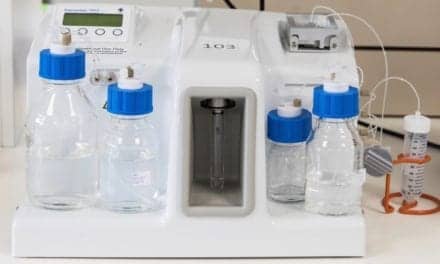According to a health economics study published online in the American Journal of Managed Care, use of the Breast Cancer Index by bioTheranostics is associated with lower medical costs when used either at diagnosis or at five years post-diagnosis in estrogen receptor-positive (ER+) breast cancer patients.1
The study—the first to look at the economic impact of the Breast Cancer Index—evaluated the cost utility of the test from a US third-party payor perspective, assessing the economic impact of implementing the assay in a population of ER+ patients at diagnosis and 5 years post-diagnosis compared with standard practice.
The Breast Cancer Index is a second-generation gene expression test based on the combination of biomarkers H/I (HOXB13:IL17BR) and molecular grade index (MGI), which assesses distinct biological pathways for breast cancer. In clinical studies among ER+ patients, the index has been shown to predict risk of both early (0–5 years) and late (5–10 years) breast cancer recurrence, as well as the likelihood of benefit from extended endocrine therapy. Two-thirds of breast cancer patients are ER+, and the risk of late recurrence is a substantial concern, with about 50% of recurrences occurring after 5 years.
Results from the health economic model show that the Breast Cancer Index is cost-saving compared with standard management. Cost savings were driven by optimal use of adjuvant chemotherapy at the time of diagnosis, and of extended endocrine therapy in patients who were recurrence-free 5 years after diagnosis, as well as increased patient compliance with treatment.
Use of the Breast Cancer Index resulted in average savings of $3,803 per patient at diagnosis, after accounting for the cost of the test. In patients tested 5 years post-diagnosis, use of the test resulted in savings of $1,803 per patient.
Catherine Schnabel, PhD, senior vice president for research and development at bioTheranostics, says this study is especially significant in light of the major safety, tolerability issues, and costs associated with endocrine therapy.
“There is a critical need to identify which patients are likely to derive benefit from extended endocrine therapy, as consideration of adjuvant treatment beyond five years is increasing,” says Schnabel. “This study shows that using the Breast Cancer Index to stratify patients based on their risk of recurrence and likelihood of treatment benefit allows for optimization of extended endocrine therapy for patients most likely to benefit, while allowing other patients to avoid unnecessary treatment and drug-related side effects, and associated costs.”
“Extended adjuvant hormonal therapy is beneficial for some patients, which is clear from multiple studies,” says study coauthor Haythem Ali, MD, medical oncologist at the Henry Ford Heath System. “Using tools such as the Breast Cancer Index to distinguish those who benefit from those who don’t maximizes benefit and minimizes harm. Being cost-effective is an encouraging added bonus.”
The economic analysis was funded by bioTheranostics and completed by Health Advances, a healthcare consulting firm. “In today’s cost-constrained environment, this study provides important clarity on the Breast Cancer Index’s economic impact,” says lead author Gary Gustavsen, vice president for personalized medicine at Health Advances. “Given its utility in both newly diagnosed and five-year post-diagnosis patients, the test fills an unmet need in helping physicians determine the long-term management of these patients. Understanding the test’s economic savings will be important as third-party payors seek to establish medical policy surrounding the test.”
A bioMérieux company based in San Diego, bioTheranostics is a leading solution provider for early-stage breast cancer and a broad range of metastatic cancers, leveraging its unique expertise in gene expression profiling to develop a growing array of molecular diagnostic tests for cancer. The company operates a CLIA-certified, CAP-accredited diagnostic laboratory to perform its proprietary tests, including the Breast Cancer Index. Clinical research data on the Breast Cancer Index have been published in such peer-reviewed publications as Lancet Oncology, Journal of the National Cancer Institute, and Clinical Cancer Research.
Reference
1. Gustavsen G, Schroeder B, Kennedy P, et al. Health economic analysis of Breast Cancer Index in patients with ER+, LN– breast cancer. Am J Manag Care. 2014;20(8):e302–e310; published online September 10, 2014.






